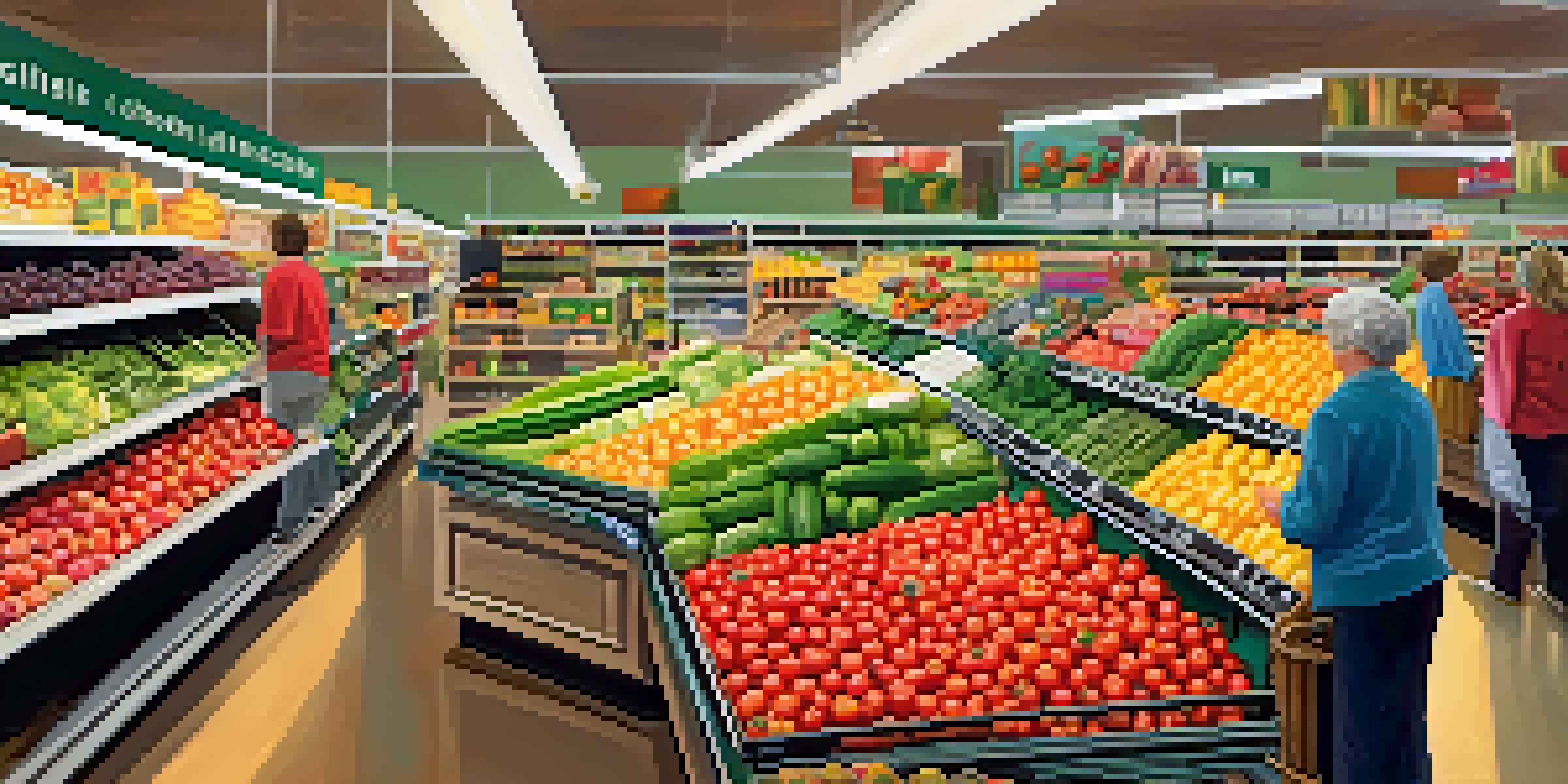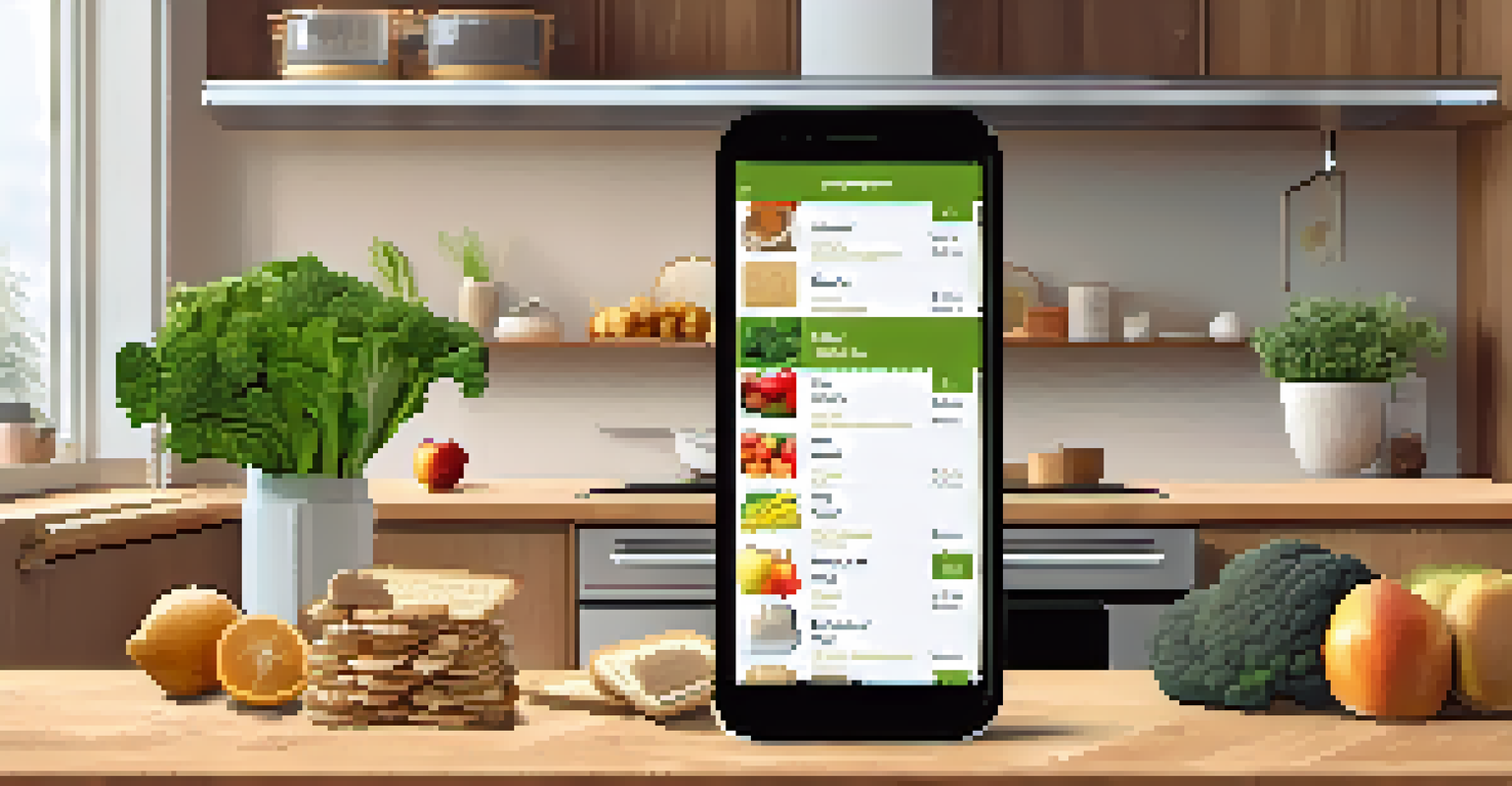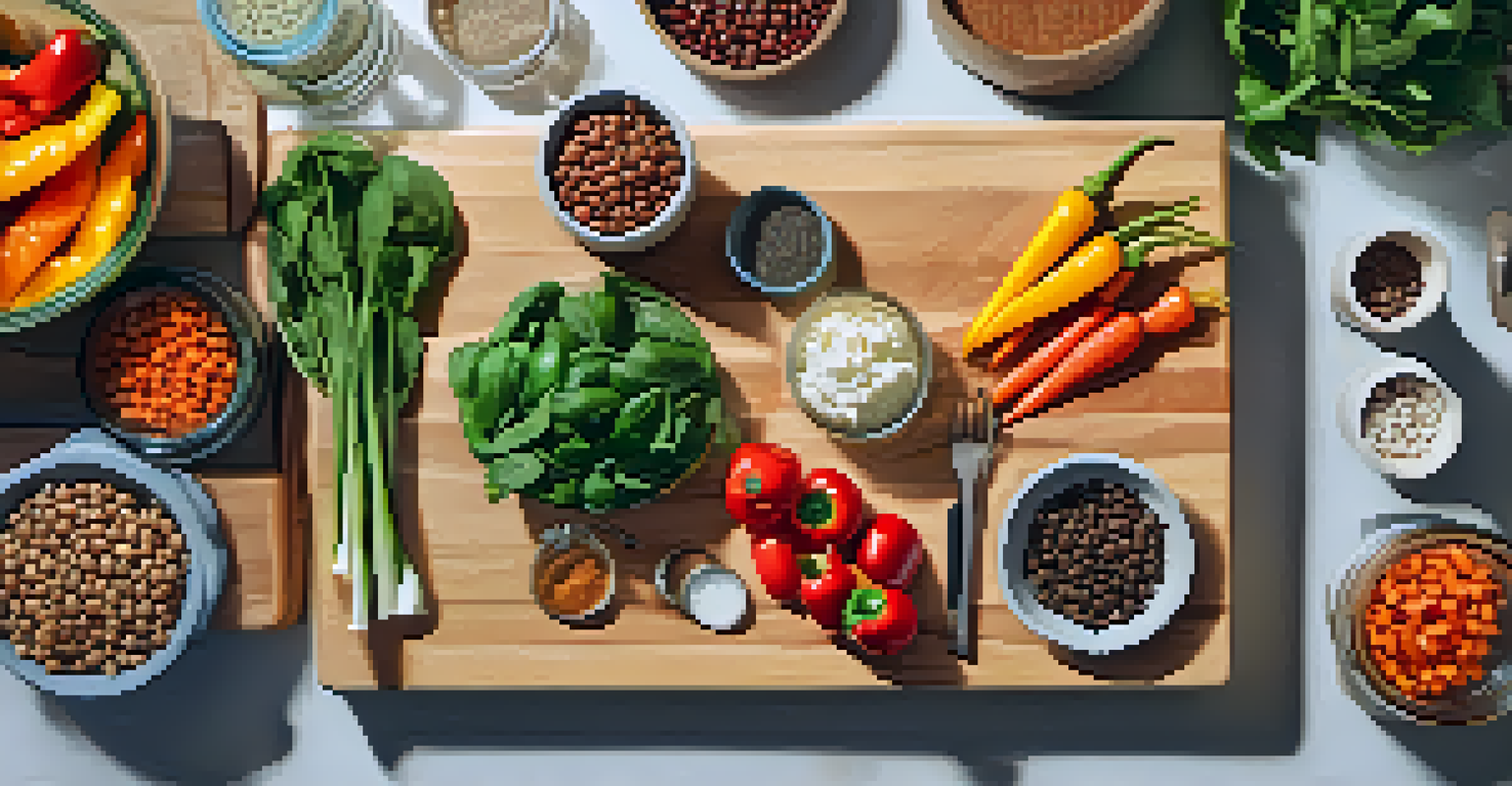Organizing Your Grocery List for Vegetarian Shopping

Why a Grocery List is Essential for Vegetarians
Creating a grocery list is a game changer, especially for vegetarians. It helps streamline your shopping experience, ensuring you buy only what you need while avoiding impulse purchases. With a well-organized list, you can focus on nutritious options that align with your dietary preferences.
Failing to plan is planning to fail.
A grocery list also saves time. Instead of wandering the aisles, you can navigate your local store efficiently, heading straight to the sections where your vegetarian staples are located. This not only makes your shopping trip quicker but also reduces the chances of forgetting important items.
Moreover, a list encourages meal planning. By thinking ahead about what meals you want to prepare, you can better select ingredients that complement each other. This leads to a more enjoyable cooking experience and helps you make the most of your groceries.
Categorizing Your Grocery List for Efficiency
To make your grocery shopping even smoother, consider categorizing your list. Group items by sections of the store—produce, grains, dairy alternatives, and snacks. This way, you can avoid backtracking and make your shopping trip more efficient.

For instance, when you list all your fruits and vegetables together, you can quickly grab everything from the produce aisle. Similarly, grouping grains and legumes allows you to hit the dry goods section in one go. This organization not only saves time but also keeps your shopping experience enjoyable.
Grocery Lists Enhance Shopping
Creating a grocery list streamlines your shopping and encourages meal planning, helping you focus on nutritious vegetarian options.
Additionally, categorizing can help you identify which items you might be missing. If your list is divided into sections, you can easily spot gaps in your pantry. This proactive approach ensures your meals remain balanced and varied.
Including Nutritional Variety in Your List
When planning your vegetarian grocery list, it's vital to include a variety of foods to ensure you get all the nutrients you need. Aim for a colorful assortment of fruits and vegetables, as different colors often represent different vitamins and minerals. Incorporating diverse ingredients can help you avoid monotony in your meals.
You are what you eat, so don’t be fast, cheap, easy, or fake.
For example, combine leafy greens like spinach with bright bell peppers and antioxidant-rich berries. This not only boosts the nutritional value of your meals but also makes your plate visually appealing. Remember, eating a rainbow of foods can be both healthy and delightful.
Don't forget to include sources of protein, such as beans, lentils, and tofu. By diversifying your protein sources, you can ensure you're meeting your dietary needs while keeping your meals exciting. This approach not only nourishes your body but also fosters a love for cooking and experimentation in the kitchen.
Planning for Snacks and Treats on Your List
Snacks are an important part of a balanced diet, even for vegetarians. When organizing your grocery list, make sure to include healthy snack options that will keep you energized throughout the day. Think about nuts, seeds, or whole-grain crackers that are easy to grab on the go.
Incorporating treats into your grocery list can also help satisfy your cravings without compromising your dietary goals. Whether it's dark chocolate or homemade energy bars, having these items on hand allows you to indulge without guilt. Balance is key, and a few treats can enhance your overall enjoyment of food.
Categorize for Efficiency
Organizing your grocery list by store sections saves time and ensures you don’t forget essential items while shopping.
Moreover, planning for snacks can prevent you from reaching for unhealthy options when hunger strikes. By having nutritious snacks readily available, you can stay on track with your vegetarian lifestyle while enjoying a variety of flavors and textures.
Utilizing Seasonal Produce for Freshness and Savings
One of the best tips for organizing your grocery list is to take advantage of seasonal produce. Eating fruits and vegetables that are in season not only ensures freshness but can also save you money. Local markets often offer better deals on seasonal items, making it a win-win situation.
For example, in the summer, you might find an abundance of tomatoes, zucchini, and berries, while fall brings squash, apples, and root vegetables. By planning your meals around these seasonal offerings, you can create delicious dishes that highlight the best flavors of the time.
Furthermore, seasonal eating encourages you to experiment with new recipes and ingredients. It can inspire creativity in your cooking and help you connect with the changing seasons. Embracing what's fresh can lead to delightful culinary discoveries and a deeper appreciation for nature's bounty.
Keeping Your Grocery List Digital for Convenience
In today's digital age, keeping your grocery list on your smartphone can add a layer of convenience to your shopping experience. There are numerous apps available that allow you to create and manage your grocery list with ease. This means you can access your list anytime, anywhere, without the worry of forgetting it at home.
Digital lists can also be updated in real-time. If you remember something you need while at work or out with friends, you can quickly add it to your list. This ensures that when it's time to shop, you have everything you need in one place, making your grocery run more efficient.
Embrace Seasonal Produce
Utilizing seasonal fruits and vegetables not only enhances freshness and flavor but can also lead to cost savings at local markets.
Additionally, many grocery apps offer features like meal planning, recipe suggestions, and even price comparisons at local stores. By taking advantage of technology, you can simplify your vegetarian shopping experience and make healthier choices with minimal effort.
Reviewing and Adjusting Your List for Future Shopping
Once you've completed your grocery shopping, take a moment to review your list and reflect on what worked and what didn't. Did you use everything you bought? Were there items that went to waste? Analyzing your shopping habits can help you refine your list for future trips.
Adjusting your list based on your experiences ensures that your grocery shopping becomes increasingly efficient over time. If you notice that certain vegetables frequently spoil, consider reducing their quantity or trying different storage methods. This practice not only saves money but also minimizes food waste.

Moreover, by keeping track of your favorite meals and ingredients, you can create a go-to list that reflects your personal preferences. This tailored approach can make grocery shopping feel less like a chore and more like an adventure, as you discover new ways to enjoy vegetarian cuisine.